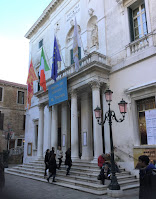Alberto Zaccheroni - football coach
First Italian coach to lead a foreign nation to success
The football coach Alberto Zaccheroni, who won the Serie A title with AC Milan and steered the Japan national team to success in the Asia Cup, was born on this day in 1953 in Meldola, a town in Emilia-Romagna. In a long coaching career, Zaccheroni has taken charge of 13 teams in Italy, a club side in China and two international teams, Japan and the United Arab Emirates. In common with many coaches in Italy, Zaccheroni began at semi-professional level and worked his way up through the professional leagues. Before winning the Scudetto with Milan in 1999, he had twice won titles at Serie D (fourth tier) level and twice in Serie C. Zaccheroni played as a fullback, with the youth team at Bologna and the Serie D team Cesenatico in Emilia-Romagna, but his career was hampered by a lung disease he contracted at the age of 17, which meant he could not train or play for two years. He quit playing in his mid-20s and began to coach Cesenatico’s youth teams. His coaching talents began to attract attention when, in two consecutive seasons, he was asked to take over on the bench for Cesenatico’s first team following the sacking of the head coach and on each occasion saved them from relegation. Read more…
______________________________________
Giancarlo Antognoni - footballer
Midfield star recovered from horrific injury to win World Cup
The footballer Giancarlo Antognoni, who won 73 international caps for his country and was a member of the Italy team that won the 1982 World Cup in Spain, was born on this day in 1954 in Marsciano, a mediæval town in Umbria, some 25km (16 miles) south of the regional capital, Perugia. Antognoni, who spent most of his club career with Fiorentina and still works for the club today, was regarded as one of the most talented midfield players of his generation, but had the misfortune to miss Italy’s triumph against West Germany in the 1982 final, having suffered a broken foot in the semi-final against Poland. Nonetheless, he made a major contribution to the performances that carried the azzurri through to the final, including the victories over holders Argentina and tournament favourites Brazil in the second phase. As the team's main playmaker, he set up numerous goalscoring opportunities for his teammates. Throughout the 1982 tournament, only Brazil's Zico and West Germany's Pierre Littbarski made more passes that directly led to goals. Antognoni himself had a goal incorrectly ruled out for offside against Brazil, although Italy still came out on top thanks to Paolo Rossi’s stunning hat-trick in a famous 3–2 victory. Read more…
____________________________________
Arrigo Sacchi -- football coach
AC Milan manager's tactics revolutionised football in Italy
Arrigo Sacchi, the football coach who led AC Milan to back-to-back European Cups and steered Italy to a World Cup final, was born on this day in 1946 in Fusignano, a small town not far from Ravenna in Emilia-Romagna. Unusually among top coaches, Sacchi never played football as a professional. Aware of his limited ability, he quickly decided he would concentrate instead on becoming a manager, taking charge of a local amateur team, Baracca Lugo, when he was just 26. Literally, he worked his way up from the bottom, making a living as a shoe salesman while training his players in his spare time. Yet step by step he ascended to the very top of the game, landing jobs on the coaching staffs at Cesena, Rimini and Fiorentina before Parma, then in the third tier of the Italian football pyramid, made him head coach in 1985. He won promotion to Serie B in his first season and finished only three points short of promotion to Serie A in his second year, when Parma also pulled off one of the biggest upsets of the season, knocking AC Milan out of the Coppa Italia, which is Italy's equivalent of England's FA Cup. Read more…
_____________________________________
April Fools' Day - Italian style
What lies behind the tradition of Pesce d'Aprile?
Playing practical jokes on April 1 is a tradition in Italy in the same way as many other countries, although in Italy the day is called Pesce d’Aprile – April’s Fish – rather than April Fools’ Day. It is said to have become popular in Italy between 1860 and 1880, especially in Genoa, where families in the wealthier social circles embraced the idea, already popular in France, of marking the day by playing tricks on one another. The most simple trick involves sticking a cut-out picture of a fish on the back of an unsuspecting ‘victim’ and watching how long it takes for him or her to discover he had been pranked but over the years there have been many much more elaborate tricks played. Often these have involved spoof announcements or false stories in the newspapers or on TV or radio shows, aimed at embarrassing large numbers of gullible readers, viewers or listeners. One of the first such large-scale hoaxes took place in 1878, when the newspaper Gazzetta d’Italia announced the cremation of an Indian Maharaja was to take place in Florence, attracting a large crowd to Parco delle Cascine where a pyre had been built in preparation. Read more…

.png)
.jpg)

.jpg)
.jpg)

.jpg)

.jpg)


.gif)





.jpg)


.jpg)
_Panorama.jpg)



.jpg)

.png)
.jpg)
.jpg)

.jpg)